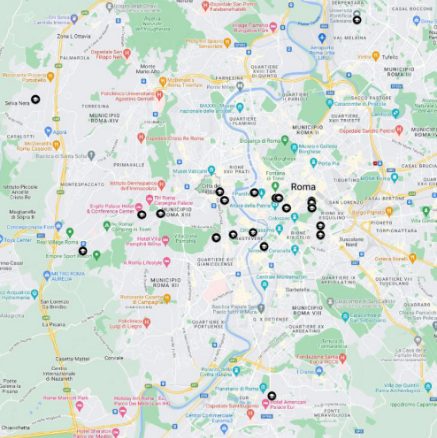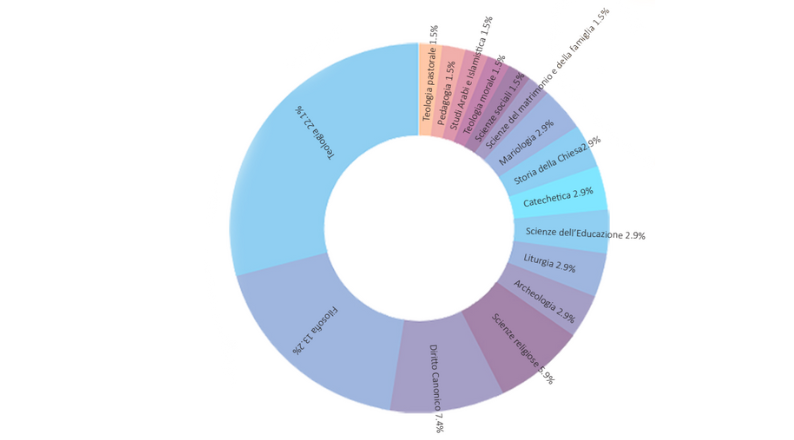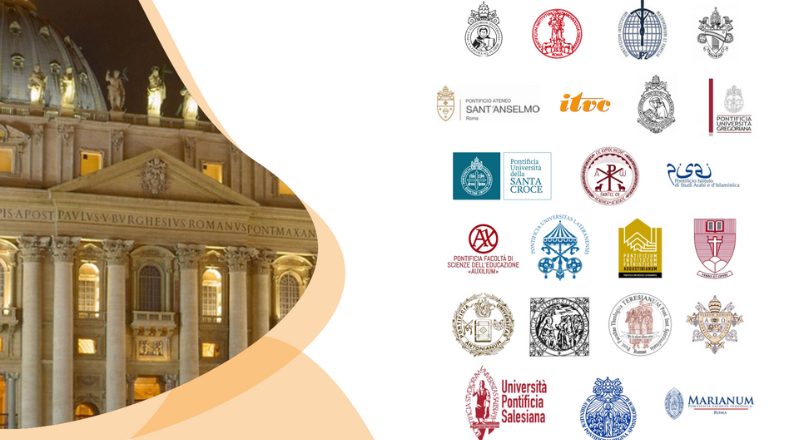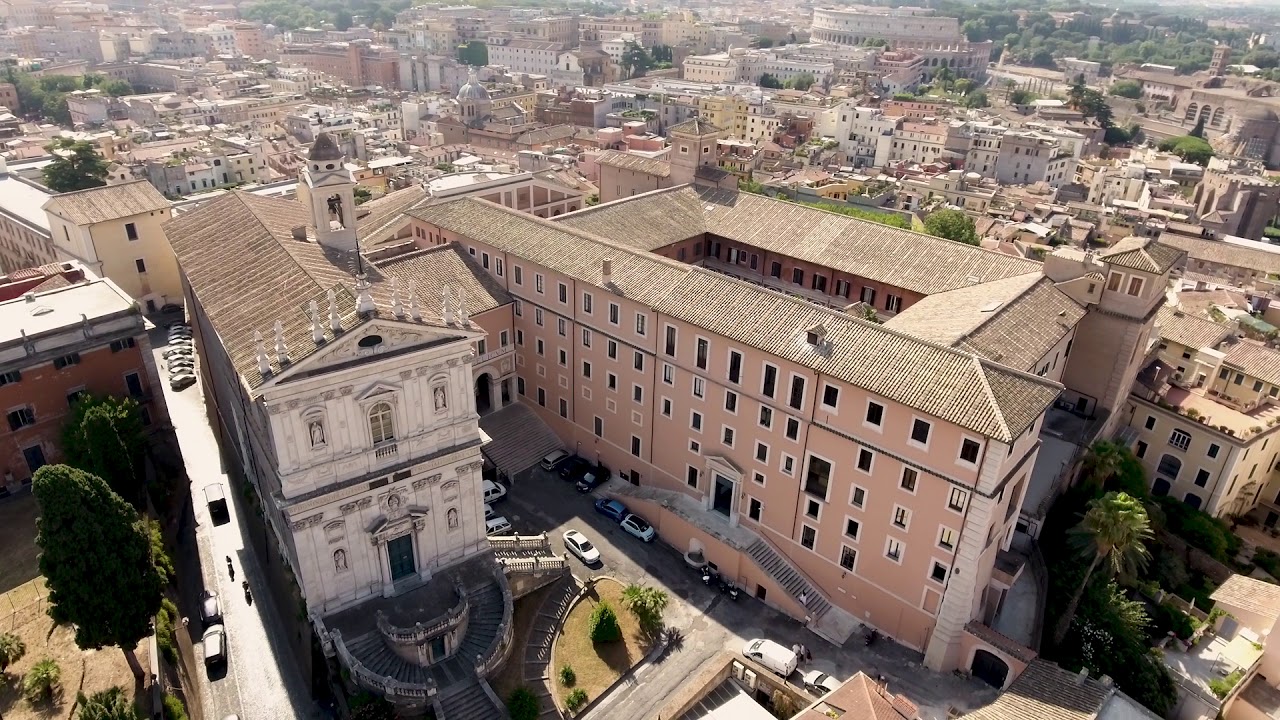(ZENIT News / Rome, 26.02.2023).- One of the usual surprises for tourists and pilgrims visiting Rome is to come across nuns, seminarians or priests dressed in the most varied clerical or monastic habits. The visitor usually comes across an unexpected surprise: it seems that in Rome there is not only a surplus of art but also an excess of vocations. At least judging from the quantity of priests and nuns that are on the streets, not only around the Vatican.
Thousands of seminarians, priests, nuns, consecrated lay men and women come to Rome to engage in ecclesiastical studies in one of the Universities, Athenaeums, Pontifical Institutes or Academies that exist in the city. The Report made known by the Conference of University Rectors and Roman Pontifical Institutions (CUIPRO) in a press conference on February 23, reflects that in the classrooms of one of the 22 Universities or Pontifical Institutions of the Vatican, a total of 16,000 students are being formed.
Pope Francis reformed ecclesiastical studies with a Constitution at the end of January 2018. The explicit aim was to “promote, at all levels, a relaunching of ecclesiastical studies in the context of the new stage of the Church’s mission, marked by the witness of joy that springs from the encounter with Jesus and the proclamation of His Gospel.” Five years after that reform, what is the current state of the higher level Institutions, which depend directly on the Holy See?

What Is a Pontifical University, How Many Are There, and How Old Are They?
The 22 Institutions spread throughout Rome (known in general as “Pontifical Universities”) are higher level Institutions erected and approved canonically by the Holy See. They depend on it and report directly to it. Despite being on “Italian territory,” they are governed by rules of the Vatican.
The oldest University is the Pontifical Gregorian University of the Society of Jesus, erected in 1551; the most recent is the Pontifical Athenaeum Regina Apostolorum, of the Legionaries of Christ, erected in 1993. In the middle, historically, are the following Universities and Athenaeums:
1577 – Pontifical University of Saint Thomas Aquinas (Angelicum) of the Dominican Fathers
1622 – Pontifical Urban University
1773 – Pontifical Lateran University
1887 – Pontifical Antonianum University
1887 – Pontifical Athenaeum of Saint Anselm
1940 – Pontifical Salesian University of the Salesians of Saint John Bosco
1984 – Pontifical University of the Holy Cross, of the Personal Prelature of the Opus Dei
For Their Part the Institutes Are:
1909 – Pontifical Biblical Institute
1910 – Pontifical Institute of Sacred Music
1917 – Pontifical Oriental Institute
1925 – Pontifical Institute of Christian Archaeology
1926 – Pontifical Institute of Arab and Islamic Studies
1949 – Pontifical Institute of Moral Theology Alfonsianum
1969 – Pontifical Patristic Institute Augustinianum
1971 Pontifical Institute of Theology of Consecrated Life Claretianum
1981 – Pontifical John Paul II Theological Institute for the Sciences of Marriage and the Family
What Is Taught in the Pontifical Institutions?
The data that follows refers to the academic year 2021-2022. Although Theology is the most offered sacred science in the Universities (in 15 centers of the total, which implies 22% of the global offer) it’s not the only one. It is followed by Philosophy (nine institutions of the 22, which represents an offer of 13% and Canon Law (there are five Faculties, which implies an offer of 7.4%. Religious Sciences are in the fourth place (there are four Higher Institutes dedicated to this, an offer of 6%).
There are also Faculties dedicated to the teaching of more specialized subjects, such as Archaeology, Musicology, Liturgy, Education Sciences, Church History and Mariology.
More specific sectors of specialization are higher formation in the musical realm, Christian Antiquity, Anthropology, Cultural Goods of the Church, Bioethics, Institutional Communication of the Church, Law, Religious Education, Priestly Formation, Leadership and Management, Christian and Classical Literature, Morality, Orientalism, Patristics, Pedagogy, Psychology, Sacred Scripture, Sciences of Marriage and the Family, Sciences of Social Communication, Sciences of Peace and International Relations, Social Sciences, Spirituality, Arab and Islamic Studies, Ecumenical Studies, Hebrew Studies and Jewish and Christian Relations, and Inter-Religious Studies.

Number of Students, Professors and Other Numbers of Interest
There is a total of 15,633 students distributed in 22 Pontifical Institutions thus:
Gregorian
Students : 2844
Countries of Provenance: 125
Professors: 344
Angelicum
Students: 1077
Countries of Provenance: 104
Professors: 184
Urban
Students: 1357
Countries of Provenance:102
Professors: 167
Lateran
Students: 1868
Countries of Provenance: 103
Professors: 162
Antonianum
Students : 525
Countries of Provenance: 76
Professors: 141
Salesian
Students: 1780
Countries of Provenance: 95
Professors: 200
Holy Cross
Students: 1334
Countries of Provenance: 85
Professors: 205
Saint Anselm
Students: 844
Countries of Provenance: 75
Professors: 66
Regina Apostolorum
Students: 1500
Countries of Provenance: 74
Professors: 104
Seraphicum
Students: 134
Countries of Provenance: 23
Professors: 42
Teresianum
Students: 381
Countries of Provenance: 50
Professors: 54
Auxilium
Students: 365
Countries of Provenance: 48
Professors: 60
Biblical
Students: 305
Countries of Provenance: 65
Professors: 48
Sacred Music
Students: 155
Countries of Provenance: 41
Professors: 25
Oriental
Students: 300
Countries of Provenance: 25
Professors: 70
Christian Archaeology
Students: 30
Countries of Provenance: 9
Professors: 9
Arab and Islamic Studies
Students: 33
Countries of Provenance: 13
Professors: 14
Alfonsianum
Students: 260
Countries of Provenance: 62
Professors: 33
Augustinianum
Students: 127
Countries of Provenance: 40
Professors: 34
Claretianum
Students: 145
Countries of Provenance: 48
Professors: 34
John Paul II
Students: 154
Countries of Provenance: 46
Professors: 34

In general, the almost 16,000 students of the Roman Pontifical Institutions come from 125 different countries. That represents 8% of the total of students registered in public and private Universities in the whole of Rome.
A total of 2056 Professors teach in one of the higher level Pontifical Institutions. This means that there is one Professor for every six students (the average in public and private Roman Universities is 16 students for one Professor).
There are 459 employees, not docents, working in one of the 22 Pontifical Institutions of higher learning.
3,086 academic degrees were issued in the academic year 2021-2022, namely: Bachelor’s, Licentiates and Doctorates. In the same period, a total of 37,844 students graduated from public and private Universities of Rome. The students of the Roman Pontifical Universities represented 8% of that total.
Finally, the Congregations, Orders or ecclesial realities that have the ownership of the Pontifical Institutions of Higher Learning in Rome are: the Society of Jesus, the Legionaries of Christ, the Claretians, the Redemptorists, the Discalced Carmelites, the Franciscans, the Capuchins, the Dominicans, the Servants of Mary, the Benedictines, the Augustinians, the Opus Dei, the Salesians and the White Fathers. The only feminine Congregation with Pontifical Institution are the Daughters of Mary Help of Christians.



